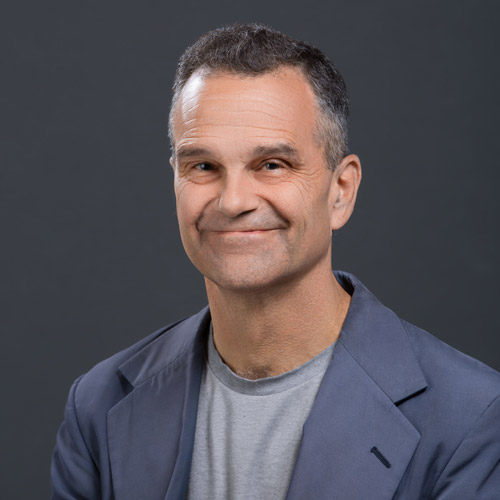ENG Alum Bob Hines Is NASA Astronaut Candidate
Elite group of 12 chosen from 18,000-plus who applied

BU has many alumni in high places, but Bob Hines is bound for greater heights. He is one of only a dozen people chosen this year by NASA to be an astronaut candidate.
Hines (ENG’97) survived a selection process where the odds of making it were, well, astronomical: a record 18,300 people applied for the astronaut slots, NASA says. The Air Force combat veteran and lieutenant colonel in the Air Force Reserve has been a research pilot at the Johnson Space Center in Houston for five years.
The astronaut candidates—seven men and five women—report in August for two years of training. When they graduate, they will join an astronaut corps that currently stands at 44 and a tradition dating back to the first US astronauts 58 years ago.
Hines’ possible assignments range from the International Space Station to commercial spacecraft to journeying into deep space as part of NASA’s Orion project, which has an ultimate goal of reaching Mars.
“We are going to be thrilled to do whatever mission they put in front of us,” says Hines, adding that his generation of space explorers is surfing an expanding wave of opportunity. When he started working at NASA five years ago, the agency’s mission “was probably at the bottom of the bathtub,” as the space shuttle program ended. “The parking lots were pretty empty.”
But with the range of upcoming missions, he says, “The space world is our oyster right now.”
In notifying him that he’d made the cut, NASA officials had fun at his expense. As Hines tells it, on May 25, the day the candidates were to find out if they’d been chosen, he got to his plane for a prescheduled test flight when he saw Christopher Cassidy, then chief of the Astronaut Office, strapped in the back seat, supposedly replacing a copilot who couldn’t make it. The two men flew for an hour and a half without a word about whether Hines had been selected.
“Very awkward,” Hines says. “It was myself, Chris Cassidy, and this giant elephant” in the plane. After they landed, Cassidy hinted at the good news by saying, “That’s a pretty good commute you have. Are you sure you want to double it?” Only when the director of NASA’s manned space flight called Hines over to announce, “We’ve got a job offer for you,” was he finally told.
Hines’ course of study as an aspiring astronaut will combine a Trekkie’s wildest dreams with rigorous intellectual requirements. “Spacewalks are the hardest thing, physically and mentally,” NASA said in announcing its new class, so candidates must demonstrate their prowess in a giant pool that simulates weightlessness, training in spacesuits to master life support systems, handle emergencies, and make space station repairs.
Learning the International Space Station’s advanced technological systems, including its robotic arm, as well as Russian (along with English, one of the station’s two international languages) are also part of the regimen.

Sheryl Grace, a College of Engineering associate professor of mechanical engineering, recalls Hines as a great student, with his heart set on flying planes. He tried to enlist in the Navy after BU, Grace says, but failed the vision test. “He was totally bummed,” she says, “but then found out that the Air Force eye requirement wasn’t as strict.”
During flight school, Hines told her, one of his training flights went awry when the instructor made him approach a landing too low. “There was a badly placed truck—and he imbedded the landing gear in the truck and then had to land the plane on its belly,” Grace says. “He obviously made it through flight training anyway.”
Before he graduated, Hines had done independent research with Grace, who wrote him a recommendation for the Air Force. For his part, he credits BU, and particularly Grace, with teaching him the “foundation of engineering and engineering discipline” undergirding his career.
Born in North Carolina and raised in Pennsylvania, the 42-year-old Hines majored in aerospace engineering at ENG and earned a master’s degree from the US Air Force Test Pilot School. He also holds a master’s in aerospace engineering from the University of Alabama.
Commissioned in 1999 by the Air Force Officer Training School, he has served 18 years on active duty or in the reserves. In those capacities and as a research pilot, he has logged more than 3,500 hours of flight time in 41 types of aircraft, according to NASA.
Hines also flew 76 combat missions for the Air Force, most in Iraq and Afghanistan. Often assigned to suppress attacks on American ground forces, he recalls, he would be gratified to be in radio communication with US soldiers after dropping a bomb and hear the background noise of enemy fire suddenly stop.
During the execution of deposed Iraq leader Saddam Hussein in 2006, he flew combat patrol over Baghdad, “a pretty bizarre thing,” he says, for a man who’d first heard of Saddam as a high school sophomore during the first Gulf War in 1991.
Hines has numerous NASA and military honors, including two Air Medals for meritorious achievement during aerial flight and Iraq and Afghanistan Campaign Medals. He and his wife, Kelli, have three children.
The prospect of distant travel into space, he says in a lighthearted video NASA made of its newest astronaut candidates, leaves him “pretty excited—need lots of bathroom breaks.”
“I pack light,” he jokes in the video when asked about spaceflight’s cramped quarters. As for the food he’s most looking forward to enjoying in space: “Pierogies.”

Comments & Discussion
Boston University moderates comments to facilitate an informed, substantive, civil conversation. Abusive, profane, self-promotional, misleading, incoherent or off-topic comments will be rejected. Moderators are staffed during regular business hours (EST) and can only accept comments written in English. Statistics or facts must include a citation or a link to the citation.